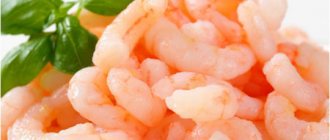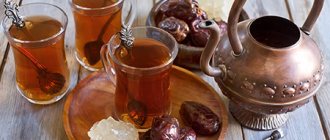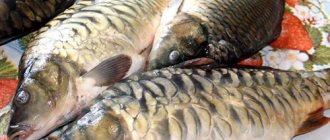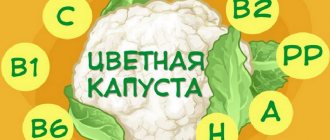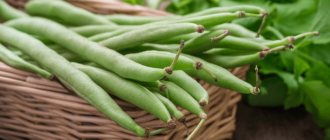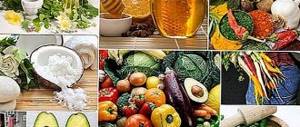Inflammation of the pancreas is accompanied by a lot of unpleasant symptoms, including pain and discomfort.
Pancreatitis requires immediate treatment, which must be comprehensive. During this period, special attention is paid to proper nutrition and adherence to the dietary menu.
The main part of the recommended products are fresh vegetables and fruits. In winter, it is very difficult to find high-quality fruits and berries.
Therefore, many people prefer to eat dried fruits. Is it possible to eat dried fruits with pancreatitis? You should look into it in more detail.
Benefits and harms
When answering the question whether it is possible to eat dried fruits with inflammation of the pancreas, it is worth understanding their positive and negative effects on the body.
Dry fruits are an excellent substitute for fresh berries and fruits, which are not allowed to be eaten for many diseases of the digestive system.
They should be used with caution in case of pancreatitis. With this diagnosis, the consumption of sugar and fiber is limited, and dried fruits contain these components in excess.
On the other hand, such delicacies contain a large amount of vitamins and beneficial elements, which, when dried, are concentrated in greater quantities than in fresh fruits.
Their use promotes rapid recovery after a strict diet, which is prescribed during an exacerbation.
A gentle diet excludes large amounts of carbohydrates and various vegetable oils.
Some fruits contain these components in abundance. Equally important is the drinking regime for pancreatitis, in which you are supposed to drink various liquids.
Compotes made from dried fruits for pancreatitis are ideal as a drink.
Compotes contain a large amount of vitamins, minerals, and beneficial elements. All of them have a beneficial effect on the patient’s condition and help him quickly recover from illness.
They are allowed to be drunk in chronic forms of the disease, since they do not have a negative effect on the organ and do not overload it.
On the contrary, compotes made from dried fruits help incoming food be better absorbed.
Allowed dried fruits
Of all the existing dried fruits, it is necessary to determine which ones can be eaten for pancreatitis.
Allowed fruits can be eaten during the period of remission of the chronic form. Which ones exactly:
- Apples.
- Prunes.
- Pears.
All dried fruits have a minimum amount of calories, are absolutely harmless to the inflamed pancreas, and are a powerful source of vitamin and mineral complexes.
With the help of prunes, you can effectively cleanse the intestinal cavity and normalize digestive functions, which is important for such a diagnosis.
Forbidden dried fruits
In addition to the beneficial properties, some types of dried fruits can be harmful to the inflamed pancreas, especially during exacerbation of the pathology.
What dried fruits should you avoid:
- Bananas.
- Dates.
- Raisin.
- Dried apricots.
- Figs
All of the dried fruits listed contain components that should not be consumed if you have pancreatitis.
These include sugar, vegetable oils, and carbohydrates. Compotes are also excluded from them, since the nutritional value can harm the patient’s condition.
Pancreatitis and dried fruits: will there be any benefit?
The healthiest prunes are dried naturally, without chemical treatment.
For those suffering from this unpleasant disease, one prohibited product is enough (fatty, fried, smoked, salty, alcohol are especially dangerous) to cause an attack and unbearable pain. Should we be “afraid” of prunes? This is one of the few dried berries that can be consumed without fear for pancreatitis. It is a storehouse of valuable substances such as:
- pectin;
- proteins;
- sugar (fructose, sucrose, glucose);
- acid (citric, malic, oxalic);
- mineral elements (potassium, sodium, phosphorus, calcium, iron).
Another argument in favor of dried plums is that it corrects the functioning of the stomach, improves metabolism, and prevents constipation. This is what is needed for an inflamed gland.
The gastrointestinal tract is the first thing that prunes effectively affect
But you should enjoy this product with caution: 2-6 berries per day. In case of sudden attacks of pain, prune infusion will be useful and effective, it will reduce swelling and improve bowel movements. During periods of remission, you can add plums to cottage cheese, yogurt, porridge, desserts, and main courses.
Dried pear
Eating dried pear has a positive effect on the functioning of the pancreas and removes toxic substances
Honey pear is a fruit that improves the functions of the digestive system. Due to fructose, iron is unloaded. And due to the presence of essential oils, immunity increases and the emotional background improves.
Remember! In case of acute form of the disease, pears should not be present in the diet!
Due to the tannic properties of the fruit, hard, stony grains will in any case harm those suffering from pancreatitis. Therefore, only the preparation of compotes and decoctions without using the ingredient itself is allowed.
Dried apples
Dried apples are a concentrated source of energy, a storehouse of insoluble fiber, ascorbic acid and pectin.
A fairly common treat in many homes. And since heat treatment does not affect the concentration of valuable elements, dried fruits can “boast” of the presence in the composition:
- ascorbic acid;
- calcium;
- gland;
- magnesium;
- B vitamins;
- iodine;
- potassium, etc.
Is it possible to eat these dried fruits if you have pancreatitis? Since apples have diuretic and laxative effects, they are indispensable in the treatment of inflammatory processes of the gastrointestinal tract.
Important! Do not forget about the presence of a large number of organic acids. Therefore, the best option for an unhealthy person is to prepare compote. It will not negatively affect the functioning of the gland and will alleviate the condition.
Dried apples
Dried apple fruits have a greater supply of nutrients than fresh fruits. They not only have an impeccable taste, but are also absolutely safe for any form of pancreatitis.
They do not irritate the delicate mucous membrane of the stomach and intestinal cavity, and do not burden the pancreas.
Dry apples improve the functioning of the gastrointestinal tract, normalize the absorption of incoming food, gently cleansing the body of harmful substances, waste and toxins.
Dried apple fruits contain large amounts of potassium and magnesium, which have a positive effect on the health of patients suffering from heart and vascular diseases.
For people with iron deficiency, this delicacy will also be useful, since dried apples contain a large amount of iron.
Such fruits will effectively raise hemoglobin levels, cope with anemia, and improve the supply of oxygen at the cellular level.
Dried pears
It is highly recommended to eat dry pears for inflammation of the pancreas. This is due to the rich tannin content.
Thanks to this substance, the fruits acquire slightly astringent properties. This delicacy promotes healing and rapid recovery.
Pears have an antibacterial effect, so they help stop severe inflammation.
For these reasons, doctors recommend drinking pear compotes in large quantities for colds, infectious, viral diseases and pancreatitis.
Dried pears are very rich in vitamin and mineral complexes. They have a positive effect on the functioning of the entire body and the protective functions of the immune system.
Metabolism is normalized, the nervous system calms down, damaged tissues are quickly regenerated - all this is the result of the influence of dried pear fruits.
Thanks to potassium and iron, the functioning of the cardiovascular system is normalized, and the functions of blood formation are increased.
Prunes
Eating prunes for pancreatitis helps remove harmful substances from the body due to its cleansing and laxative properties.
To relieve constipation, you only need a few pieces of prunes. One of the unpleasant and uncomfortable symptoms of pancreatitis is bloating and flatulence. With the help of prunes you can avoid such unpleasant consequences.
To remove bile from the gallbladder and prevent congestion, it is recommended to consume prunes, as they have a choleretic effect.
Thanks to this property, prunes are useful not only for pancreatitis, but also for cholecystitis.
Prunes have a diuretic effect, actively reduce blood pressure, stop inflammatory processes occurring in the kidneys, and have a beneficial effect on the organs of the genitourinary system.
Due to its high resistance to various infections and viruses, it is considered to be a highly effective immunomodulator.
Due to the high potassium content, prunes are recommended for consumption by patients with heart pathologies.
In addition to the listed properties and actions, it is a powerful source of calcium, iron, magnesium, and phosphorus.
A little more about dry treats
What other dried fruits can you eat for pancreatitis? Doctors often add dried apricots to the list presented.
Dried apricots normalize the activity of the insulin apparatus of the pancreas
After all, dried apricot is an active “fighter” against swelling due to its high levels of potassium and sodium. But only infusions are allowed.
Attention! Dried sour berries and fruits are strictly prohibited for pancreatitis.
Rules of use
If chronic pancreatitis has worsened or an acute form of the disease is observed, dried fruits can only be consumed in the form of compotes and decoctions.
Before drinking, you need to carefully strain the drink to avoid getting any pulp. Eating fruit from compote is prohibited.
Sour compote for pancreatitis can be sweetened only with the help of sweeteners. Regular sugar is prohibited.
It is necessary to follow all recommendations to avoid complications, since sugar and fruit pulp from compote can cause serious damage to the inflamed mucous membrane of the organ.
There is another way to consume dried fruits during an exacerbation - making tea.
You can brew a tasty and healthy drink from pieces of dried apples, pears, and prunes. All components are poured with boiling water and infused. This drink will not only be tasty, but also healthy.
After stopping an attack of acute pancreatitis or during the period of remission of a chronic form, you can include dried fruits in your daily menu. They can be combined with milk porridges, yogurts, and prepare delicious mousses for dessert.
What dried fruits can and cannot be included in the diet for pancreatitis?
What dried fruits are allowed for pancreas problems, and is it possible to drink dried fruit compote for pancreatitis? During stable remission of a chronic form of pathology, it is recommended to drink decoctions and uzvar.
Regarding the use of dried fruits as an independent dish, their quantity should be limited, since the diseased gland is not able to produce insulin in the amount necessary for the complete breakdown of sugar, so the likelihood of developing diabetes increases several times.
It should be immediately noted that if persistent remission is observed, then the patient’s diet can be supplemented with dishes with dried fruits. What dried fruits are allowed for pancreatitis can be seen in the table below:
Healthy recipes
There are several ways to prepare a tasty and healthy compote.
It is enough to choose the right ingredients and the healing drink will not only saturate the body with useful vitamins, minerals and elements, but will have a therapeutic effect on the pancreas.
Dry fruit compote
Dried apples, pears and prunes are used as the main ingredients.
Such a healthy cocktail will quench your thirst, fill your body with a vitamin complex, allow you to quickly restore strength and promote rapid recovery.
The use of prunes is optional. But it is included if the patient has constipation due to pancreatitis.
If there are no such symptoms, dry plums do not need to be used. How to cook:
- All dry ingredients in the form of dried fruits are soaked in cold water for half an hour.
- After infusion, be sure to thoroughly rinse the fruit under running water.
- Place the fruits in a saucepan, pour boiling water over them, and simmer over low heat.
- Remove from heat and let sit.
- After complete cooling, you can drink the compote. The daily norm should not exceed 2 glasses.
Dried fruits are good for the human body, but with pancreatitis, not all fruits and berries are allowed.
Before introducing new dried fruits into your diet, be sure to consult a doctor.
Features of consuming dried fruits for inflammation of the pancreas
Permitted products are consumed in a limited manner. The only correct solution is to cook compotes from dried fruits without sugar, prepare infusions and decoctions. These drinks will not burden the gland, quench thirst, and relieve swelling.
Dried fruit compotes are recommended to be included in complex therapy for cystitis, gastrointestinal diseases, gout, rheumatism
Only the person himself is responsible for his own well-being and healing. Dried fruits will prove to be an elixir of health in the fight against almost any ailment!
What is pancreatitis, its causes and symptoms
Pancreatitis is inflammation of the pancreas.
Pancreatitis is inflammation of the pancreas. The disease can manifest itself in both acute and chronic forms, accompanied by severe pain in the upper abdomen.
Inflammatory processes in the pancreas are caused by premature activation of enzymes, which become aggressive to the environment and begin to act destructively.
The main group of people suffering from pancreatitis are those who consume large amounts of alcohol, fatty foods, as well as people prone to overeating.
Pancreatitis can be acute or chronic. Chronic pancreatitis develops against the background of an acute form of the disease or due to diseases of the liver, thyroid gland or atherosclerosis. It is difficult to determine the cause of the disease, but in most cases pancreatitis is caused by excessive alcohol consumption and gallbladder disease.
Factors in the appearance of this disease can also be metabolic disorders, heredity, vascular diseases, hormonal problems, infections, abdominal trauma or surgery on the stomach or biliary tract. Symptoms of pancreatitis:
- Severe cutting pain;
- Heat;
- Very high or low blood pressure;
- Change in complexion;
- Nausea;
- Vomit;
- Dry mouth;
- Diarrhea or constipation;
- Yellow coating on the tongue;
- Bloating;
- Yellow skin color.
At the initial stage of the disease, the symptoms of pancreatitis are similar to those of severe poisoning, but if the patient’s condition only worsens, then professional medical help cannot be avoided.
Delayed diagnosis of pancreatitis can cause serious complications. The patient may develop cholecystitis, an inflammation of the gallbladder. Due to infection, acute pancreatitis may be accompanied by purulent complications. In some cases, intra-abdominal bleeding occurs. Serious complications are also destruction of the pancreas and peritonitis.
Chronic pancreatitis can cause diabetes mellitus. Death is also possible. In order to prevent the occurrence of pancreatitis, you need to monitor your diet, consume spicy seasonings and fatty foods in small quantities, give up alcohol, and pay attention to the slightest unpleasant symptoms that can be caused by diseases of the biliary tract or gastrointestinal tract.
Harm of dried apricots for pancreatitis
Under no circumstances should dried apricots be consumed in large quantities for pancreatitis. The fiber contained in the product can cause harm. It can overload the pancreas and provoke an exacerbation of the disease.
If inflammation of the pancreas occurs due to diabetes, it is better to consult with your doctor about including dried fruits in your diet. This is due to the fact that dried apricots contain about 85% sucrose. Its processing requires a large volume of insulin, which is produced in small quantities during the development of the disease. But in any case, even if permission is obtained, preference should be given to sour apricot varieties.
When choosing dried apricots, you should pay attention to its appearance. It should have a natural orange tint, be slightly wrinkled, matte and translucent. In addition, the product should have a light natural apricot aroma.
source
Methods for diagnosing and treating pancreatitis
A blood test can help diagnose pancreatitis.
You can verify the presence of the disease after a thorough diagnosis, which includes:
- Blood analysis;
- Coprogram;
- Checking the pancreas, liver, bile ducts and gallbladder using ultrasound;
- Computed tomography of the abdominal organs.
Treatment is prescribed by the doctor depending on the severity of the disease. Mild pancreatitis can be cured by following a special diet for a few days.
In case of complications, the patient is provided with intravenous nutrition for 3–5 weeks. In more severe forms of the disease, the patient requires mandatory hospitalization and sometimes surgery. In case of pancreatitis, it is strictly prohibited:
- Alcoholic drinks;
- Fast food;
- Food with hot spices and seasonings;
- Fatty fish;
- Canned foods;
- Coffee, strong tea, cocoa;
- Carbonated drinks;
- Citrus;
- Yogurts, full-fat sour cream;
- Chocolate, biscuits, caramel;
- Sausage, sausages;
- Rye bread;
- Radishes, spinach, sorrel.
One of the main points of treatment is the content of the diet. When treating pancreatitis, for the first four days the patient should refuse food altogether and drink only warm water without gas. The next stage is to start carefully consuming healthy foods.
Diet No. 5 is considered generally accepted in treatment, the essence of which is the refusal of food, which increases the formation of acid in the stomach and provokes pancreatic enzymes to work actively. It is permissible to eat:
- Vegetables;
- Lean meat, fish and poultry;
- Porridges cooked in water or milk (except wheat);
- Non-acidic dairy products;
- Mild cheese;
- Boiled vermicelli;
- Baked apples;
- Vegetable soups;
- Wheat bread;
- In limited quantities jam, honey;
- In limited quantities, dry biscuits, marmalade, marshmallows;
- Weak tea, compote.
In case of serious complications, the patient must follow such a diet for 8 months, and after that, carefully plan his daily diet.
What dried fruits can you eat while on a diet?
Dried fruits enriched with many vitamins.
Dried fruits are an important source of substances beneficial to the human body. People suffering from pancreatitis limit themselves to a large list of foods for a long time.
Eating dried fruits helps replenish the amount of vitamins and minerals that are lost along with foods that are forbidden to the patient.
Adding dried fruits to the diet is only available for chronic pancreatitis, and even then not all and in small quantities. Allowed to eat:
- Prunes;
- Dried pears;
- Dried apples.
Due to the high sugar content, it is prohibited to consume:
- Figs;
- Dates;
- Raisin;
- Dried apricots;
- Dried bananas.
The best option for consuming dried fruits when suffering from pancreatitis is to prepare compotes from them with the addition of a small amount of sugar.
Such a liquid will not harm the pancreas; rather, on the contrary, it will strengthen the body and fill it with vitamins.
A thematic video will tell you the benefits of prunes:
What are dried fruits and features of their use for pancreatitis
Dried fruits are berries and fruits that have been dried to a dry state, while their dehydration is 80%. At home, they are dried in the sun, in the oven or oven. A dehydrator is used on an industrial scale. Dried fruit or berries are present in many therapeutic diets due to their high vitamin composition.
Eating dried fruits for pancreatitis, subject to certain rules, will only benefit a weakened body, because therapeutic nutrition for this disease involves a limited intake of fats and carbohydrates, which means that their gradually accumulating deficiency after some time will lead to the appearance of:
- Flatulence.
- Vitamin deficiency.
- Apathy.
- Stomach disorders.
Therefore, it is very important to promptly replenish the deficiency of these substances. Fruits can help with this, but not all of them are allowed for inflammation in the gland, especially in their raw form. For example, if you have pancreatitis, it is forbidden to eat fresh apples of sour varieties, but baked or dried apples are not only possible, but also necessary.
During the acute phase of the disease, strict fasting is indicated, so dried fruits should not be consumed at this stage. During the recovery period after acute inflammation of the pancreas and exacerbation of chronic pancreatitis, it is allowed to use dried fruits for preparing dietary dishes:
If the dried fruit compote turns out to be sour, it is sweetened with sweeteners. The prepared compote must be filtered to remove fruit grounds, but the dried fruits themselves from the drink should not be consumed under any circumstances.
Fruit teas have proven themselves well. Just throw a few slices of dried prunes, pears and apples into the teapot, pour boiling water over it and leave for 5 minutes.
Dried fruits go well with various nuts; such dessert dishes will not only satisfy hunger, but will also bring great benefits to a sick body.
Why are prunes so beneficial for patients with pancreatitis?
Prunes are plums that have been dried in a special way.
Prunes are one of the healthiest dried fruits. Prune fruits, even in dried form, have many useful things: pectin, fiber, malic acid, vitamins A, B1, B2, C, iron, phosphorus, sodium, potassium, magnesium.
Patients with pancreatitis can add prunes to their diet, but very carefully and in small quantities, and patients with complications should not eat prunes or any other dried fruits at all, since with pancreatitis the pancreas becomes very sensitive to foods with a lot of sugar. Also, prunes can provoke a choleretic process, which is unacceptable in case of pancreatitis.
With a mild form of the disease, the patient is able to independently determine the amount of dried fruit necessary to maintain nutrients, focusing on the individual characteristics of his body. You are allowed to eat no more than ten dried fruits per day. Benefits of prunes for the body:
- Normalization of metabolism;
- Normalization of the condition and functions of the gastrointestinal tract;
- Prevention of constipation;
- Improved skin condition;
- Fighting bacteria;
- Reducing the risk of cardiovascular diseases;
- Reducing the chances of developing cancer;
- Increased performance.
- Prunes also have a diuretic effect and a strong laxative effect.
This dried fruit can be consumed without heat treatment, as whole fruit. Prune purees, jelly, and mousses are tasty and healthy. This product is also suitable as an addition to main courses. For patients with severe pancreatitis, only prune tinctures and compotes are allowed.
A person’s health depends on how the pancreas works. A healthy lifestyle, balanced nutrition and attention to the slightest symptoms of the disease are important steps towards a life without problems.
Eating dried apricot fruits for inflammation of the pancreas helps saturate the patient’s body with vitamins and microelements. You should not overuse these dried fruits: dried apricots contain a large amount of carbohydrates, the excess of which is harmful to the patient. Before introducing dry fruit into your diet, it is recommended to consult a gastroenterologist.
Eating dried apricot fruits for inflammation of the pancreas helps saturate the patient’s body with vitamins and microelements.
What dried fruits are consumed for pancreatitis, and which ones should be treated with caution?
In case of an acute attack of illness or exacerbation of chronic pancreatitis, dried fruits are allowed to be used only for preparing compotes and infusions. Before use, the compote must be carefully strained so that no fruit pulp accidentally gets into it. The patient is strictly prohibited from eating fruit from the compote.
If the compote turns out to be too sour, you can sweeten it with a sweetener. It is strongly not recommended to use regular sugar for this purpose. Strict adherence to these rules is of great importance in case of pancreatitis, since sugar and dried fruit pulp will be extremely harmful to the inflamed pancreas.
Dried fruits can also be used to brew tea. To do this, throw a few slices of dried apples and pears or a couple of prunes into a teapot and leave to steep for 5-7 minutes. Dried fruits will give tea not only a pleasant taste and aroma, but also fill it with great benefits.
During the recovery period after acute pancreatitis or during remission of a chronic form of the disease, patients are allowed to include dried fruits in their daily diet. So, it is recommended to add dried fruits cut into pieces to milk porridges and yoghurts, and to make delicious mousses from boiled dried fruits.
But perhaps dried fruits are best combined with various types of nuts. A particularly tasty and healthy dessert can be prepared from prunes and walnuts, sprinkled with a small amount of low-fat sour cream.
Many patients with inflammation of the pancreas are interested in what dried fruits can be eaten for pancreatitis? And this is an absolutely normal phenomenon, since the diet of patients with a similar diagnosis is very meager, but at least sometimes you want something tastier.
You need to take dried fruits with pancreatitis with extreme caution, since each person has their own individual characteristics of the body, when one person tolerates the product well, while another has an allergic reaction or complete intolerance to the product from this product.
Apples and pears
It is apples and pears that are considered the safest for patients with pancreatitis. These fruits in dry states are perfectly tolerated by the body. The only thing to keep in mind is that they may be treated with pesticides.
Experts recommend that patients with pancreatic inflammation make their own dried apples and pears. It is better if it is a harvest from your own garden, where the trees were not treated with harmful chemicals.
If this is not possible, then you can buy apples and pears and dry them yourself, but then you will have to do several simple operations. First, the fruits need to be thoroughly washed and even left in water for a while in order to free them a little from harmful components that they may have received during ripening and treatment for pests.
The second method to get rid of poisons is to soak in kefir. Fermented milk products neutralize most toxic chemicals. After processing, you can be sure that drying fruit will not do more harm than good.
Prunes
Prunes are taken with extreme caution. This product is considered very difficult on the stomach. Prunes for pancreatitis are consumed exclusively dried, but in no case smoked. It can be added to compote in the proportion of several fruits per 3–4 liters of drink.
Prunes are also added to steamed casseroles, but to do this, the berries need to be crushed into crumbs and only then baked.
Prunes help fight intoxication that the body is exposed to during inflammation of the pancreas. It is used for preventive purposes against heart and liver diseases.
Dried apricots
The benefits of dried apricots for inflammation of the pancreas are very doubtful. This is due to the fact that dried apricots contain a lot of sugar. Dried apricots for pancreatitis can cause disturbances in the production of the hormone insulin, which helps the body control the patient’s blood sugar levels.
Also, dried apricots are very difficult for the body to poison; it requires a lot of enzymes, which can easily provoke another attack of the disease.
Take dried apricots as food only after consulting your doctor. If the examination shows that there is no threat to the production of insulin, then dried apricots are allowed to be eaten in very moderate quantities. They, like prunes, need to be crushed into porridge and only then added to dishes or compotes.
Can you eat raisins for pancreatitis? Raisins are to a greater extent one of those foods that should not be taken in case of inflammatory processes of the pancreas. It is poorly digested and puts a strain on the digestive tract.
But with persistent remission, experts allow a small amount of these dried grapes to be added to your diet. You are allowed to consume no more than a handful of raisins per day, and they must be washed well and filled with boiling water. It is soft raisins that will load the pancreas a little less, and the digestive system will receive some relief.
Raisins are considered a good antioxidant, so if the body accepts them well, then there will be benefits from them. Also, with the help of raisins, defecation is improved, which often has severe deviations in pancreatitis.
Benefits and harms
Take care of your health - save the VKontakte link
Dried apricots for pancreatitis are a valuable source of nutrients, microelements, vitamins and minerals. The sweet dried fruit contains iron, which prevents anemia that often accompanies inflammation of the pancreas. The composition includes calcium, potassium, magnesium and phosphorus. The potassium content in dry fruit is greater than in fresh fruit, which makes dried apricots useful for heart and vascular diseases. Vitamin A has a positive effect on vision and prevents the occurrence of cancer.
This product has many beneficial properties. It has a laxative and diuretic effect, normalizes blood pressure, and removes waste and toxins from the body.
Dried apricots can also cause harm. This dried fruit contains a large amount of sugar. Excess dried apricot in the diet is a cause of diabetes. In diseases of the digestive system, the laxative effect can be harmful. In addition, dried apricots are a source of fiber. For this reason, it should be excluded from the menu if you have diarrhea.
Dried apricots for pancreatitis are a valuable source of nutrients, microelements, vitamins and minerals.
The sweet dried fruit contains iron, which prevents anemia that often accompanies inflammation of the pancreas, and contains calcium, potassium, magnesium and phosphorus.
Dried apricots can also be harmful; this dried fruit contains a large amount of sugar; an excess of dried apricots in the diet causes diabetes.
Dried apricots for pancreatitis
Dried apricots are dried halves of large-grade apricots. This method allows not only to preserve most of the beneficial properties, but also to increase the concentration of minerals important for the human body. That is why dried fruits are a component of many therapeutic diets. Dried apricots for pancreatitis are not considered safe foods, so you need to know in what form and quantity they can be included in the diet.
How to choose
When choosing a sweet product, pay attention to its color. The fruits should be evenly colored. The color should be dark orange or brown, not too bright. If the fruits are shiny, you should not buy them: shine indicates treatment with sugar syrup. High-quality dried fruit should be matte. The product should not have a strong chemical odor.
If you buy dried apricots in bags, carefully read the ingredients. If it lists any ingredients other than dried apricots, you should avoid eating them.
High-quality dried fruits must be dry. If the fruits are stuck together, you should not buy them.
It is preferable to buy dried apricots from trusted sellers. Ask them about the taste of the product you are purchasing. You should not take fruits that are too sweet or sour, since acid and sugar increase the load on the damaged pancreas.
It is preferable to buy dried apricots from trusted sellers; ask them about the taste of the product you are purchasing.
Store dried apricots in a glass jar. Choose a place for storage that is not exposed to direct sunlight.
Rules of use
You can eat dried apricots only in the approved form. It is important to observe the permissible dosages, which should be selected individually with your doctor. Do not allow an excess of this product on the menu.
In acute form
During acute pancreatitis, drinks made from dried fruits are useful. The patient is shown compotes. Before preparing the drink, rinse the fruits thoroughly in warm boiled water and soak for several hours. The finished drink can be served by adding a little honey.
Adding sugar or artificial sweeteners is prohibited.
It is prohibited to consume sweet fruits in solid form during this period. Due to their high fiber content, they can cause diarrhea.
In the chronic stage
A patient with a chronic form of inflammation can eat several fruits a day in their pure form. You can add dried apricots to food when cooking. It is recommended to pre-soak briefly and grind the fruits a little. After meals in the first half of the day, it is permissible to consume up to 2 dried fruits.
It is important to observe the permissible dosages, which should be selected individually with your doctor.
If the chronic form of the disease worsens, you will have to give up the sweet natural product: for the first 2 days you can only drink water and rosehip decoction, then you are allowed to gradually introduce other foods into the menu. You shouldn't start with dried apricots because they contain a lot of sugar.
During remission
During periods of remission, dried apricots are allowed to be consumed in moderation. You can prepare dishes and drinks, eat up to 5 pieces of sweet product per day.
You should not overuse dried apricots.
Dried fruits for acute pancreatitis
The acute stage of pancreatitis is characterized by blockage of the ducts and enzymes accumulating in the body of the pancreas. This form is considered extremely dangerous to the patient's health. Relapse is treated only in a hospital; independent treatment often leads to severe complications and further surgical intervention.
All experts unanimously advise to refrain from eating in the first days of deterioration of the condition. It is necessary to fast until the urge to vomit passes. The absence of nausea indicates that enzymes have begun to flow into the duodenum through the ducts.
Nutrition is administered very carefully with constant monitoring of the patient’s condition. In the first days, avoid rough food and drink. If you have pancreatitis, you can drink compote, but under no circumstances should you eat the pulp of the fruit itself immediately after a relapse.
A decoction of dried fruits must be taken without sugar, so as not to provoke diabetes. It is highly undesirable to consume the pulp itself, since it contains a lot of fiber, which burdens the entire digestive tract.
Recipes for food and drinks
Before preparing meals, make sure that they do not contain prohibited products. Choose recipes that are suitable for your form of the disease.
In the chronic form, you can drink jelly, eat fruit soups and salads made from permitted ingredients. You can add a small amount of orange fruits to homemade cookies, cottage cheese casserole, and porridge.
Compote
Compote quenches thirst and saturates the body with useful substances. To prepare it, use not only dried apricots, but also other fruits. Dried pears and apples are a good choice, since they are allowed for acute forms of the disease. Dried fruits should be washed and soaked for 2 hours before adding: this will make their processing easier for the body.
Compote quenches thirst, saturates the body with useful substances; to prepare it, use not only dried apricots, but also other fruits.
Take 100 g of pears and apples, several dried apricots. Boil 2 liters of water in a saucepan. Add the fruit when the liquid boils. After boiling again, boil for 5 minutes, then cool. Sugar and artificial substitutes should not be added.
If you are used to drinking compote with a sweetener, it is permissible to add a teaspoon of honey.
Dessert
For inflammation of the pancreas, mousse made from orange dried fruit is suitable. To prepare it you will need:
- 50 g dried apricots;
- 1.5 cups of boiled water;
- half a glass of freshly squeezed orange juice;
- 2 sheets of gelatin.
Soak the gelatin in cold water for 5 minutes. Rinse the dried apricots thoroughly and soak in hot water for 10 minutes. After this, boil in 1.5 liters of boiling water for 10 minutes and strain the resulting liquid. Dissolve the swollen gelatin in a decoction of dried fruits that has cooled to room temperature. Grind the fruits using a blender and add to the liquid. Boil the mixture, then remove from heat and cool to 40°C. Pour in orange juice and mix with a mixer. Distribute the mousse into the molds and place in the refrigerator until the mixture hardens.
For inflammation of the pancreas, mousse made from orange dried fruit is suitable.
Pilaf
You can eat pilaf with dried apricots during remission. At other times, this product is not worth eating due to its high fat content. To prepare this dish, take:
- 0.5 kg rice;
- 6-7 pieces of dried apricots;
- 100 g vegetable oil;
- 1 tbsp. l. liquid honey.
Wash the rice and boil it until done. Rinse the dried apricots, add them to boiling water and boil for 5-10 minutes until the fruits soften. Then chop them finely.
Pancreatitis: treatment + diet
Diet for pancreatitis
Useful properties of dried apricots
Pour 100 g of oil into a frying pan, heat it and add dried apricots. Fry dried fruits for 2-3 minutes. Pour rice into a frying pan, pour in honey, stir thoroughly. Cover with a lid and leave for 115 minutes. After this, remove the container from the heat. The resulting pilaf is best eaten cold.
Dried apricots are useful for pancreatitis, but you need to use them correctly.
- ← Hemorrhoids do not go away
- Bananas for gastritis →
Dried apricots and chronic pancreatitis
During dietary rehabilitation of patients, pureed dried apricots can be a full-fledged ingredient in permitted sauces or fruit sauces. It is especially necessary for those patients who, due to a strict diet, have constipation and/or have a lack of potassium.
The onset of remission allows you to increase the list of acceptable dishes with dried apricots. It can be found in porridges, casseroles, meat dishes, pilaf, pies and sauces. But this “liberty” is undesirable for patients whose glucose metabolism is impaired due to pancreatitis (after all, up to 80-84% of sugars can be present in certain varieties of dried apricots).
Useful qualities
It is not for nothing that dried apricots are included in a variety of healing tables. Valuable dried fruit:
- stabilizes myocardial function (after all, 100 g of dried apricots contain 1717 mg of potassium and 105 mg of magnesium);
- enriches the body with dietary iron (3.2 mg per 100 g) and calcium (160 mg per 100 g);
- is a natural diuretic;
- prevents thrombosis;
- removes toxins (thanks to its pectins).
The maximum daily portion of dried apricots for chronic pancreatitis:
- exacerbation phase - the amount of dried apricots is determined individually;
- phase of stable remission - 40 - 80 g of dried apricots (the amount depends on the tolerance of the dried fruit and the patient’s weight, because dried apricots are high-calorie).
In acute pancreatitis, the amount of dried apricots is determined individually.
Pancreatitis is inflammation of the pancreas. The disease is manifested by low or complete absence of digestive juice in the intestines. As a result, the process of processing incoming food is disrupted or stopped. Along with medications, diet helps alleviate the patient’s condition. It is important to adhere to the rules for consuming even permitted products so as not to aggravate the situation. This also applies to dried apricots.

